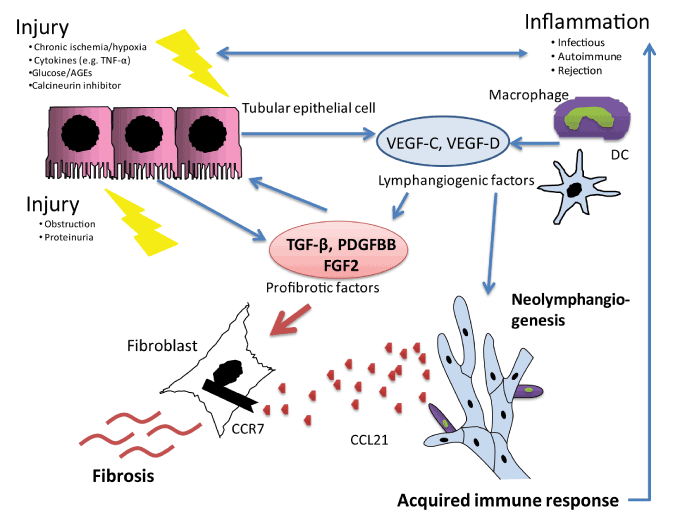
 |
| Figure 1A: Schematic illustration of the close interactions between pro-fibrotic and pro-lymphangiogenic factors. Tissue injury promotes inflammation, release of cytokines and release of VEGFC and VEG-D (upper part of the panel). This results in neolymphangiogenesis. Lymphatics can clear interstitial edema, but also promote ongoing inflammation via acquired immune responses and directly activate fibroblasts (via CCL21 release, lower part of the figure). |